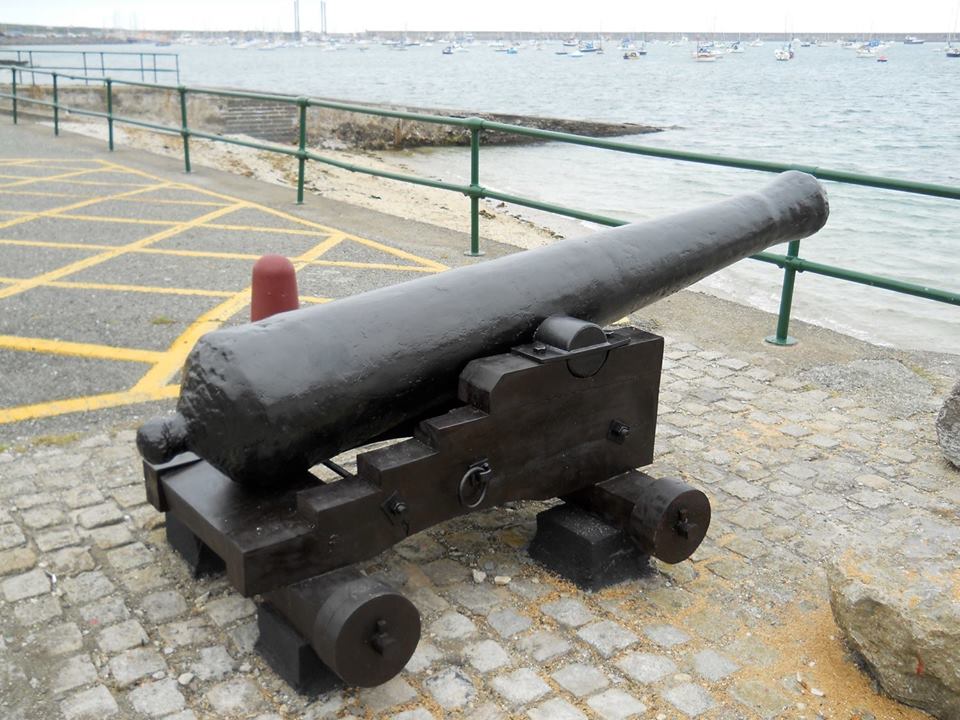French privateer Renard of St. Malo.
30 guns, 150-200 men
Lost Holyhead Bay 1710, crew saved.
From Dublin Intelligence - Tuesday 19 December 1710
Captain Welsh, master of the Packet boat that brought over the last
packets from England, and all the passengers, report that there was a
French privateer of St Malo, a 30 gun ship, [which] was drove into
Holyhead by the late storm, where, upon making the usual signal of great
distress, and firing all the night time long, the said Captain Welsh
took out two boats and boarded her, the stress of weather still
continuing harder and harder upon them, and having snapt their cables,
they were forced at last to run the ship up a sand bank near the shore
side, to save the mens lives, which effectually was done, and the whole
ship's crew saved, consisting of 200 and odd men, who were all sent to
Beau-Maurice[sic] gaol. This privateer had taken several very rich and
valuable prizes, and had several ransomers on board. In very little
time after that all the men were brought on shore by the care and pains
of the said Capt. Welsh, who very much ventured with great hazard his
own and the boat's crews lives to relieve this stranger, the ship soon
after staved all to pieces.
From Holyhead Maritime Museum:
The naval cannons outside Holyhead Maritime Museum were dumped
overboard by French privateers who tried to hold Holyhead men hostage
but were thwarted by a storm.
Cannon at Holyhead:

Their ship flew British colours and fired its guns as a call of
distress when it sailed into Holyhead Bay on a Saturday in 1710. Local
customs officer Maurice Owen and his crew went to help, but once
aboard they realized they'd been tricked. The ship was a French
privateer
known as Fox, heavily armed and with a crew of more than 150 men.
Privateers were privately owned ships authorised by governments to
attack enemy shipping.
Mr Owen and his crew were stripped and interrogated about Holyhead's
defences. The vessel anchored off Borthwen beach to await a ransom
for the hostage's return. As if by divine intervention, a storm arose
and felled the ship's masts. The crew had to jettison 14 large cannons
to make the ship easier to handle. Now the crew fired the remaining
guns in genuine distress, but the townspeople were too afraid to help.
The ship eventually grounded on rocks between Borthwen and Penrhos
point. On the Sunday morning, the hostages and privateers were
removed by boat. Most of the privateers were jailed in Beaumaris, but
20 were sent to Dublin.
Some of the cannons were discovered by divers more than a
century later [1810-20, using a diving bell], during construction of the
Admiralty Pier. When King George IV had an enforced break of journey in
Holyhead in 1821, the town had insufficient firepower to deliver a royal
salute, so the heavily corroded cannons were fired.
Privateer Mary Ann of Liverpool, lost June 1777.
From Manchester Mercury - Tuesday 24 June 1777
The Mary and Ann, of Liverpool, and a Sloop her Consort, has taken 13 Prizes,
and carried them into Tortola. Their Cargoes are supposed to be worth £10,000.
From Saunders's News-Letter - Tuesday 24 June 1777
The Mary Ann, Leigh,.. were due to sail from Tortola with convoy on 4 May.
From New Lloyds List - 1 July 1777:
The Mary Ann, Leigh, from Tortola for Liverpool is lost off Tuskar[June 1777]; the crew
and indigo are saved. The vessel and the rest of the cargo, went down in a few
hours after she struck upon the rock.
Privateer Eagle of Liverpool, lost May 1760.
From Lloyds List Friday 16 May 1760
The Eagle, Metcalf, from Leverpool [sic] for Guadalupe is lost on
the Point of Air on the Isle of Man, but the crew and part of the cargo
saved.
The Eagle snow was said to be the oldest ship belonging to Liverpool.
